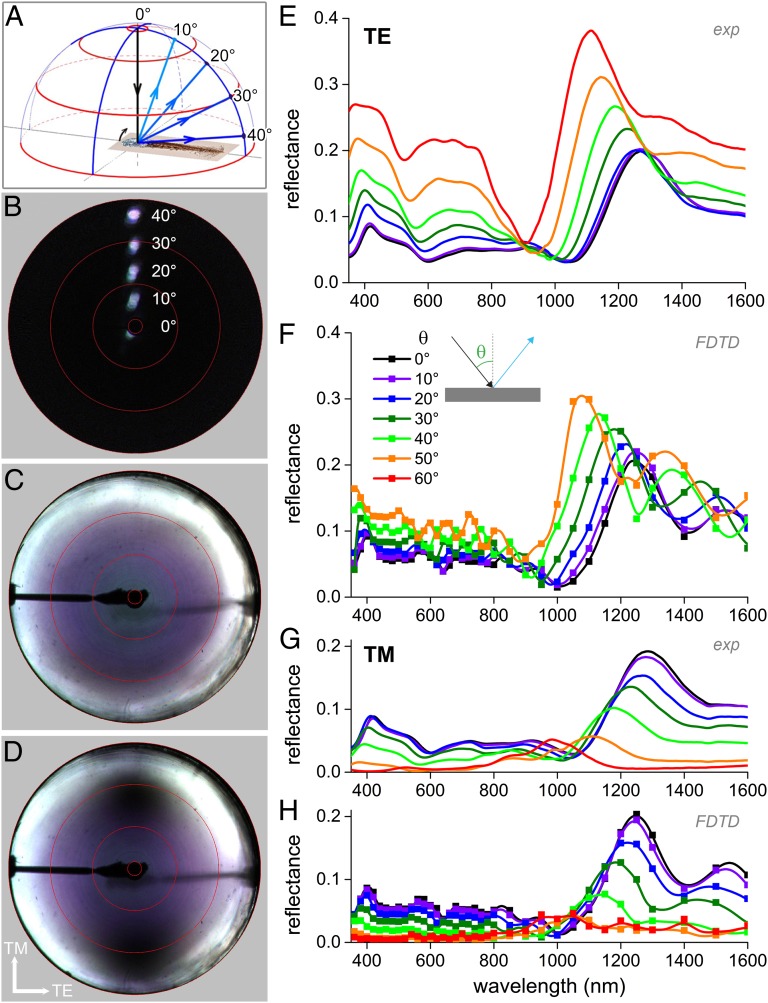Fig. 2.
Optics of the occipital feather barbules. (A) Diagram of light reflection by an occipital feather barbule rotated in steps of 10°, from 0°, to 10°, 20°, 30°, and 40° resulting in reflected beams into angular directions of 20°, 40°, 60°, and 80°. (B) Superposition of light-scattering patterns for different angles of illumination as sketched in A. Illumination of a barbule with a narrow-aperture (∼5°) light beam yielded a similar narrow-aperture directionally reflected beam, demonstrating the specular characteristics of the occipital feather. (C) Light-scattering pattern of the feather oriented normal to the central axis of the imaging scatterometer and illuminated hemispherically (full aperture 180°) with unpolarized light. (D) As C, but with illumination of the barbule with TM polarized light. The reflection of TM-polarized light becomes minimal at Brewster’s angle (dark spots around −60° and +60° at the vertical axis; see also Movie S1). The red circles in B–D indicate angular directions of 5°, 30°, 60°, and 90° and correspond to the red circles in A. (E) Angle-dependent reflectance spectra measured when applying TE-polarized light. (F) Angle-dependent reflectance spectra calculated for TE-polarized light by FDTD modeling. (G and H) As E and F for TM-polarized light.

